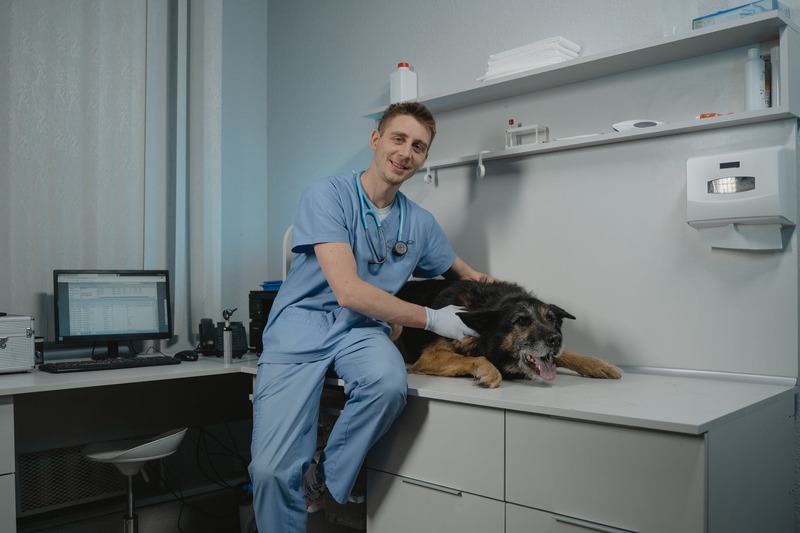As a pet owner, you want to take good care of your pets. It’s important to know when to go to a regular vet and when to see a specialist for your pet’s health issues. Veterinary medicine can be complicated, but if you understand what different types of vets do, you can choose the right care for your pet’s health problems.
The Role of Full-Service Vet Clinics
Full-service vet clinics are the primary care physicians for your pets. They are equipped to handle a broad range of medical issues and are the first stop for pet owners seeking regular check-ups and basic treatment. At a full-service vet clinic, you can expect a variety of services, including, but not limited to:
-
Routine examinations and wellness checks
-
Vaccinations and parasite prevention
-
Spaying and neutering
-
Basic diagnostic testing, such as blood work and x-rays
Professional care at a full-service vet clinic often extends beyond these primary needs. Some of these establishments offer specialized services to accommodate more detailed health requirements.
For instance, you might be seeking pet dental services within your area, such as veterinary dental services in Los Angeles. These clinics are capable of providing dental cleanings, extractions, and cavity fillings— all crucial to maintaining your pet’s oral hygiene and overall health.
When to Venture to a Veterinary Specialist
On the flip side, veterinary specialists have focused their careers on a particular aspect of animal health, having undergone extensive additional training and certification in their chosen field. These may include:
-
Cardiology
-
Neurology
-
Oncology
-
Dermatology
A general rule is to seek a specialist when your pet is facing a health issue that requires advanced expertise or technology beyond what a regular vet clinic can provide. This situation often arises after your primary veterinarian has made a referral following a diagnosis that requires more specialized attention.
Deciding Between General Care and Specialized Treatment
The decision-making process often begins the moment you notice that something is amiss with your pet’s health. Consider these factors:
-
Nature of the issue: Is the health problem routine, or is it complex and rare?
-
Severity: Is the condition life-threatening, and does it require immediate, specialized intervention?
-
Availability of treatment: Can your local full-service clinic provide the necessary care, or do you need to seek a specialist with specific equipment and expertise?
Signs You Should See a Specialist
Some certain signs and symptoms might push you towards seeking a specialist, including persistent illness, serious and sudden health crises, or chronic conditions that are not improving with standard care. If your pet exhibits unusual behavior, unusual or severe reactions to medications, or has a rare disease, these are also valid reasons to find an appropriate specialist.
Ensuring Preventive Measures
In some cases, preventive measures such as pet vaccinations are best handled by a full-service vet clinic. These clinics provide essential services such as vaccinations and parasite prevention to safeguard your pet against common diseases and pests that can impact their quality of life.
Catering to the Young Ones
For new pet parents of puppies and kittens, the journey begins at a full-service vet clinic, which offers a comfortable, one-stop environment that emphasizes growth and development. These clinics often provide a range of pediatric services designed to get your young pets started on the right paw for a healthy life.
Additionally, when seeking advice on your new companions, you might look towards a clinic like Rancho Park Veterinary Clinic as an example of a place that can guide you through your pet’s early days, providing advice that is tailored to your puppy or kitten’s specific breed and needs.
Emergency Services
In the event of an emergency, a full-service vet clinic will often be your first point of contact. Many of these clinics are equipped to handle urgent care situations; however, if your pet requires specialized surgery or intensive care that they can’t provide, they will stabilize your pet and refer you to an emergency specialist or veterinary hospital equipped to deal with critical cases.
Accessibility and Convenience
Accessibility to veterinary care cannot be understated. When considering which type of veterinary service to use, think about the proximity of the clinics or specialists to your home, their operating hours, and whether they offer emergency services. At times, the convenience and speed of a full-service clinic may outweigh the need for specialized care, especially for non-critical issues.
Final Thoughts
Choose a full-service vet clinic for regular health check-ups and basic issues with your pet. For serious or unique medical conditions, seek a specialist referral from your vet. Ensure you understand the care your pet needs to maintain their health and happiness and don’t hesitate to ask for specialist advice when required. Your attentiveness and timely decision-making will make a significant difference in your pet’s well-being.










